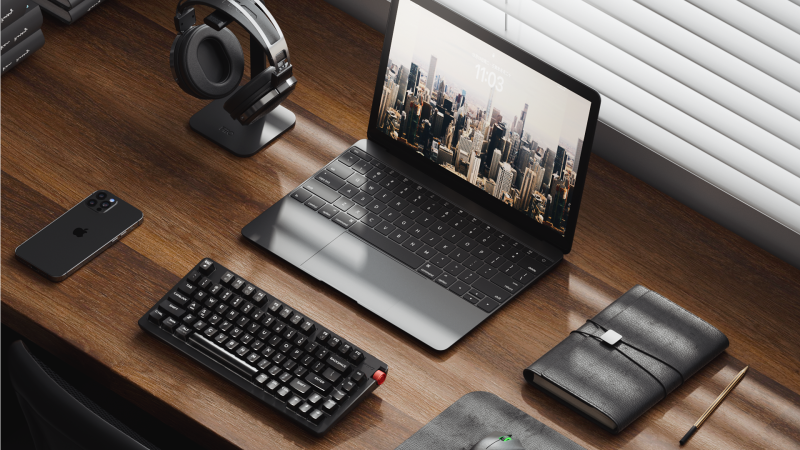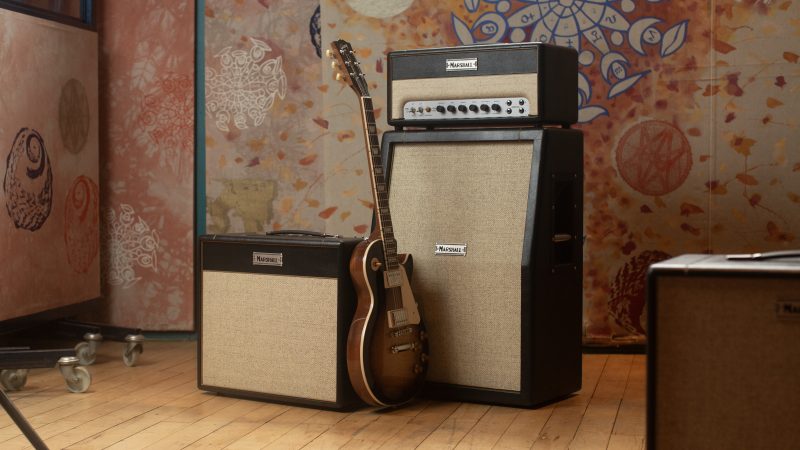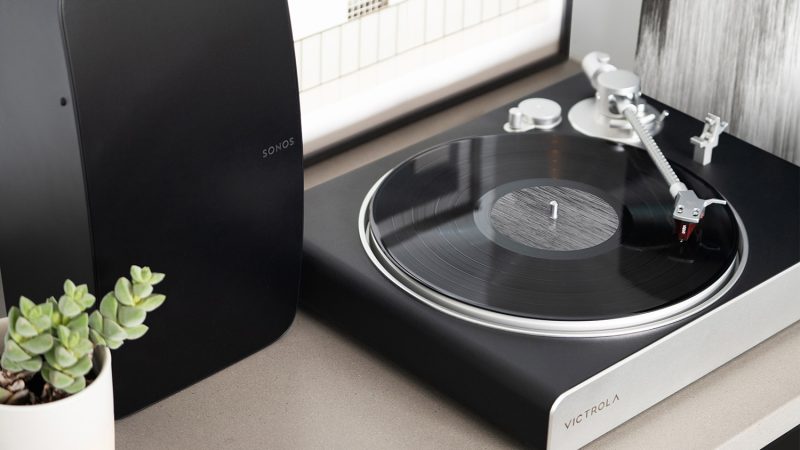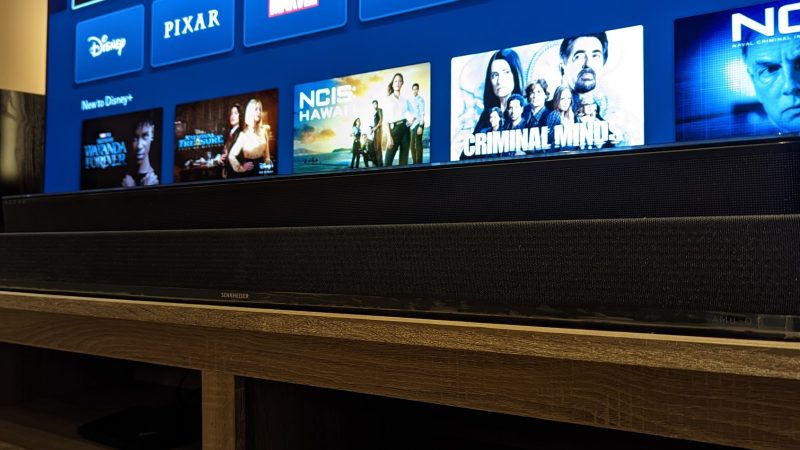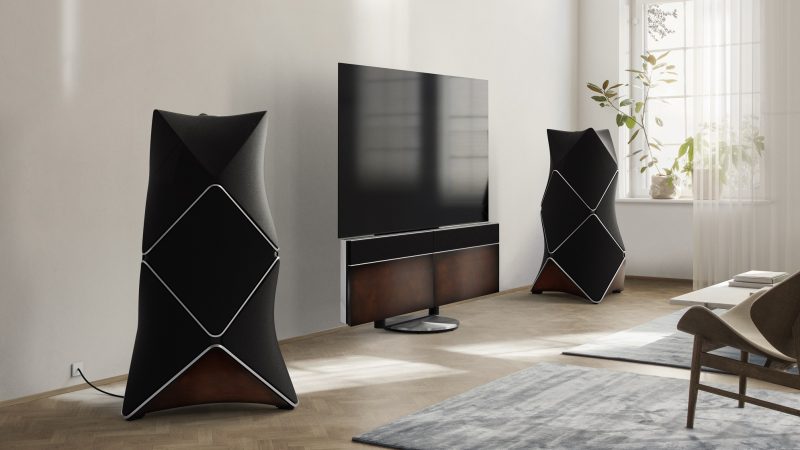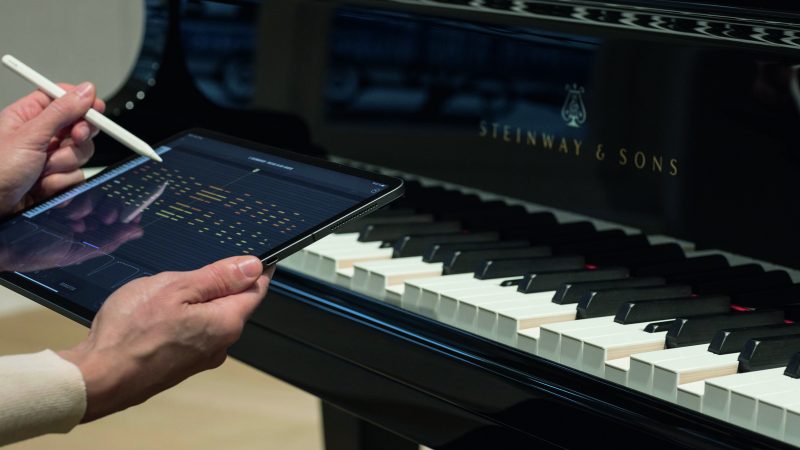PMC twotwo 5 active monitor review
 One word that keeps being repeated on the forums and social pages of Hi-Fi enthusiasts when referring to speaker output is transparency. When I was chatting to the guy on the PMC stand at Headroom I noticed that they had a CD playing through some twotwo monitors. It then occurred to me that, surely, the most transparent and authentic sound must come through monitor speakers. It then stands to reason that using the best monitors will get you the closest to what the band, engineers and producer wanted you to hear.
One word that keeps being repeated on the forums and social pages of Hi-Fi enthusiasts when referring to speaker output is transparency. When I was chatting to the guy on the PMC stand at Headroom I noticed that they had a CD playing through some twotwo monitors. It then occurred to me that, surely, the most transparent and authentic sound must come through monitor speakers. It then stands to reason that using the best monitors will get you the closest to what the band, engineers and producer wanted you to hear.
British speaker manufacturers PMC have a huge reputation for building world-class monitor systems. Just by taking a quick glance at their professional client list (Prince, Metropolis studios, Capitol studios, Brian May, Kraftwerk, Tori Amos, etc) you can see that PMC is serious about sound.
It is no surprise then that, upon opening the packaging of the twotwo 5 monitors I was kindly sent to review, I was met with the following statement:
Congratulations – You have joined the elite.
Yup, that’s the first thing that greets you on the documentation. Self-confident much?
Then again, after seeing their client list of the top mastering and recording studios, radio and TV broadcasting companies, as well as numerous famous engineers, producers and artists, it’s no wonder that PMC is rightly pleased with itself. I reckon they should be allowed a bit of a brag, don’t you?
PMC twotwo 5 design
The twotwo’s casing is made from HDF (high density fiberboard) and, as a result, are surprisingly light at just over 5KG each. I have to admit that I wasn’t looking forward to moving them around when they were first delivered, but they are remarkably light.
 I really like the blue-black matte finish which lends the monitors a pleasant tactile finish. There are sets of sorborthane isolating feet (referred to as deecups, as in decoupling, showing perhaps a love for 70s Carry-on humour) on all four sides which hints at the unique aspect of the twotwo design. This is that the monitors can be used either horizontally or vertically without compromising the tonal or stereo-imaging performance. This makes them ideally suited for near-field monitoring in situations where space is at a premium. You can even place one under a TV screen and use it as a centre-channel speaker for editing purposes.
I really like the blue-black matte finish which lends the monitors a pleasant tactile finish. There are sets of sorborthane isolating feet (referred to as deecups, as in decoupling, showing perhaps a love for 70s Carry-on humour) on all four sides which hints at the unique aspect of the twotwo design. This is that the monitors can be used either horizontally or vertically without compromising the tonal or stereo-imaging performance. This makes them ideally suited for near-field monitoring in situations where space is at a premium. You can even place one under a TV screen and use it as a centre-channel speaker for editing purposes.
 As positioning is critical in studio situations, and with no rooms being identical, this is where the precise adjustments from the twotwo’s DSP-based crossover comes in. This enables you to make tiny adjustments to the crossover slopes and phasing/delay, so that everything sits right.
As positioning is critical in studio situations, and with no rooms being identical, this is where the precise adjustments from the twotwo’s DSP-based crossover comes in. This enables you to make tiny adjustments to the crossover slopes and phasing/delay, so that everything sits right.
 Naturally, having an offset tweeter means that the speakers come in right and left flavours to help get it all balanced. PMC recommend placing the tweeters on the inside of the listening triangle, aimed such that their axes cross about 20 inches (0.5 metres) behind the listening position.
Naturally, having an offset tweeter means that the speakers come in right and left flavours to help get it all balanced. PMC recommend placing the tweeters on the inside of the listening triangle, aimed such that their axes cross about 20 inches (0.5 metres) behind the listening position.
The twotwo 5 cabinet measures 296 x 155 x 295mm (HxWxD) and weighs in at 5.4kg.
PMC twotwo 5 control and connectivity
The rear panels host both digital and analogue inputs, as well as a 2-line LED display, menu-driven control system. Scrolling through this and adjusting options is a very simple and logical process.
The menu tree starts with the overall volume setting, which can be adjusted between -48.5dB and +15dB. The input source can be selected from the balanced (XLR) or unbalanced (RCA-phono) analogue inputs, or the left or right channels of the AES3 digital input.
The analogue input sensitivity can also be set between +4 and +20 dBu, and the gain fine-tuned with a digitally controlled attenuator over a ±8dB trim range, to optimise the level feeding the Burr-Brown delta-sigma A-D converter. The latter produces a 24-bit/96kHz output, which it sends to the DSP engine.
Thankfully, if you get things a bit out of shape then you can quickly recall the default factory settings by simultaneously pressing the up and down menu buttons for more than two seconds!
Further tweaking can be had by using the digital EQ which offers adjustable bass and treble shelf sections, and a high-pass filter.
 The twotwo 5 is equipped with a 27mm soft-dome tweeter and 5-inch bass driver, which lends itself to the 5 in the speaker’s name. The twotwo 6 has a 6-inch driver, and guess what’s fitted in the twotwo 8?
The twotwo 5 is equipped with a 27mm soft-dome tweeter and 5-inch bass driver, which lends itself to the 5 in the speaker’s name. The twotwo 6 has a 6-inch driver, and guess what’s fitted in the twotwo 8?
As well as the different driver sizes, the range of speakers also have different cabinet sizes, which in turn also leads to different ATL (the clever ‘Advanced Transmission Line’ that puts the bass driver at the end of a long, heavily dampened tunnel which squirts out lovely bass through the front port) – the one for the twotwo 5 is 1.5m.
The twotwo 5 has a frequency response rate of 50Hz to 25kHz with a maximum SPL of 111dB at one metre.
The monitor has a range of inputs – both analogue (balanced and unbalanced) and AES3 digital inputs. The AES3 input accepts sample rates up to 192kHz, using a Burr-Brown SRC chip to resample the signal for the fixed 96kHz Texas Instruments DSP engine. The latter provides the overall system volume control, crossover filters, basic room-EQ facilities, and driver optimisation and protection functions.
This signal processing generates the tweeter and bass/mid output signals, which are converted to analogue again via a Wolfram 24-bit digital analogue converter.
There are three discrete, Class-D power amplifiers being used here – one provides 50W for the tweeter, while the other two are arranged in a bridged mode to deliver 150W to the bass/mid driver.
 The twotwo speakers have RJ45 sockets on the rear panel, to allow for speaker-linking and remote control options. This is really neat as the first speaker in the chain becomes the master controller with the Ethernet cable plugged in to the Thru port and the slave has it in the In port. If you had more then you’d just take the next cable from the Thru in the second speaker to the In of the third, etc. So, when you switch off the Master, off goes all the rest.
The twotwo speakers have RJ45 sockets on the rear panel, to allow for speaker-linking and remote control options. This is really neat as the first speaker in the chain becomes the master controller with the Ethernet cable plugged in to the Thru port and the slave has it in the In port. If you had more then you’d just take the next cable from the Thru in the second speaker to the In of the third, etc. So, when you switch off the Master, off goes all the rest.
PMC twotwo 5 sound
I realise that any reviews of the twotwo monitors would have been undertaken in their guise as pro-audio studio monitor loudspeakers. Makes sense. I did, more for a laugh than anything, have them plugged in to my little home studio set-up and just didn’t think I was treating them with the respect they deserved. I am not belittling my TC Electronics Impact Twin, or my computer, but my office desk is miles away from the Metropolis Mastering suite or Paisley Park.
For most of my testing I had the twotwos running through a Musical Fidelity M6si using the Line Out, just because I have all my system (Pro-ject 1 Xpression turntable, Musical Fidelity v90 Blu Bluetooth receiver, Oppo 103EU) plugged in to it. I did use them plugged directly in to my Oppo disc spinner at one point and that, it has to be said, was an awesome compact system.
The first thing that hit me was just how focused the sound from these are – and they are loud. Very loud. I could not get them anywhere near being on the limit in my little house.
On the subject of limits. The PMC logo on the front of the speakers light up white under normal conditions but if the input becomes too hot they will turn red.
Most ported speakers start to loose the impact of their bass output when listening at lower levels, I start to get the best from my Tannoys once my amp is at the 9 o’ clock position and beyond, not so with the PMC twotwo 5s. Thanks to the ATL cleverness, even music without heavily pronounced bass lines, at the lowest level setting on the speakers, there was still lovely defined bass.
 Pulling the monitors in to the centre of my living-room, I did find that the bass did drop off a little but that was easily remedied by boosting the low frequency shelf setting. To be honest, for the majority of the time, I had them running with the EQ controls set totally flat in the position that my speakers normally sit in – around 60cm away from the wall.
Pulling the monitors in to the centre of my living-room, I did find that the bass did drop off a little but that was easily remedied by boosting the low frequency shelf setting. To be honest, for the majority of the time, I had them running with the EQ controls set totally flat in the position that my speakers normally sit in – around 60cm away from the wall.
The twotwos greatest strength was in producing details and subtleties from within any music I threw at them, from whatever source, including TIDAL from my phone over Bluetooth. When switching back to my regular speakers, the Tannoys, which I have been satisfied with for over a year now, sounded so woolly in comparison all of a sudden.
Slinging on my vinyl copy of ‘The Who Hits 50’ and the twotwos still delivered an amazing mid-range clarity and transparency.
Turning to more bass-lead CDs, such as Joni Mitchell’s ‘Don Juan’s Reckless Daughter’ and Victor Wooten’s ‘Yin/Yang’, these small speakers managed to push out an impressive and extensive bass range without ever compromising mid-range accuracy.
 The high-end was equally catered for with cymbal smashes, triangle and bell hits ringing through cleanly but never ever harsh. It was as if someone had removed some invisible earplugs from my lugs.
The high-end was equally catered for with cymbal smashes, triangle and bell hits ringing through cleanly but never ever harsh. It was as if someone had removed some invisible earplugs from my lugs.
The PMC twotwo 5 had me going through my record, CD, digital and even tape (I still have my old TEAC) library as some of my favourite tracks were given new life.
In terms of stereo imaging the twotwos, of course, delivered excellent results. Even though they are designed to be near-field monitors, they stood their ground as glorious speakers in their own right thanks to a wide and stable sweet spot and excellent depth.
I played with them in portrait and landscape and also in switching them around so the tweeters were outside (as above). I couldn’t detect much of a difference in having the tweeters on the outside or inside of the triangle if I am truthful, but I did prefer the imaging with the speakers in portrait mode as opposed to landscape but, again, there wasn’t really that much in it to my ears. I guess that is a feat in itself.
PMC twotwo 5 review conclusion
I have never been so unhappy to have to return a set of speakers in my life to date. I was quite happy with my set up until I plugged in these powered monitors. Sorry Tannoy, I will love you again I am sure. This will just take time.
The level of control and flexibility that these speakers possess is remarkable. I could see why PMC finds itself in the top studios around the world. The fact that the monitors can be used in whatever orientation is required, daisy-chained for ease of control and adjustment just adds to their case.
Naturally, all this amazing ability doesn’t come cheap – and another reason why these are the reserve of the professionals.
If I can fall in love with some pro-audio studio monitors as my main music movers, I can only guess what PMC’s domestic range are like!
According to the official PMC website, two of these speakers will cost you £3300.
PMC twotwo 5 specs at a glance
- Available Finishes: Blackblue
- Crossover Frequency: 1.8kHz
- Dimensions: H 296 W 155 D 295 (mm)
- Drive Units: LF 140mm (5.5 inch), HF 27mm Soft Dome
- Effective ATL™ Length: 1.5m (4.92ft)
- Frequency Response: 50Hz – 25kHz
- Input Connectors: Balanced analogue XLR, unbalanced RCA-phono, AES3 digital XLR, (left/right channel selectable), All XLR-3F connectors wired Pin-1 screen, Pin-2 hot, Pin-3 cold, Each input has independent ±8dB trim range
- Useable Frequency Response: 50Hz – 25kHz Peak SPL @ 1M: 111dB
- Weight: 5.4kg

